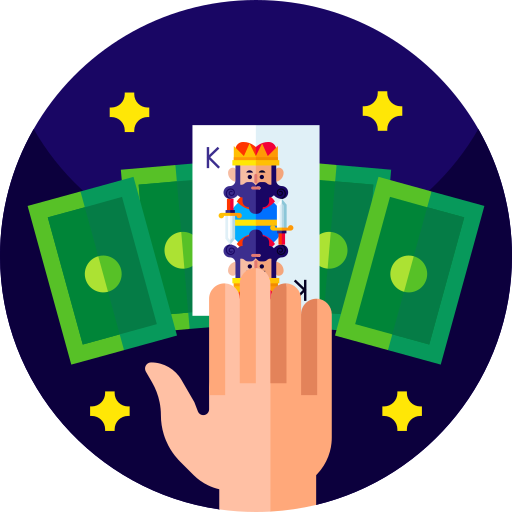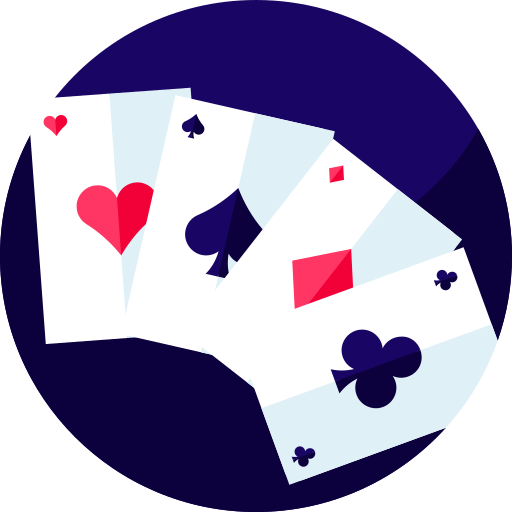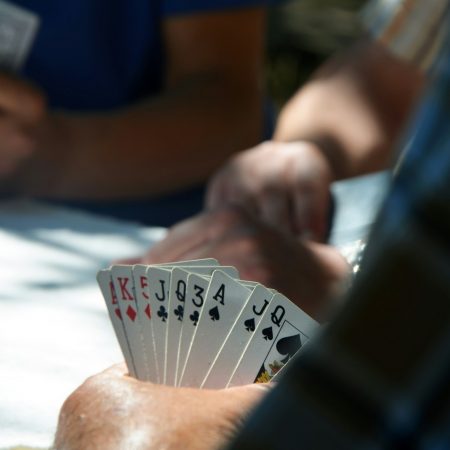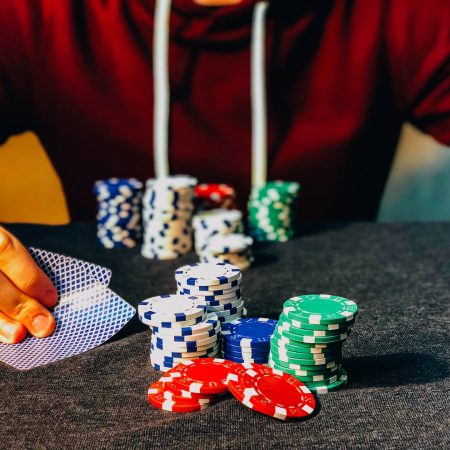Still don’t know how to play poker? No worries, you’ve found us!
👋 Welcome to POKER.MD.
We know that it can be intimidating when you just watch others play the game and not understand what the heck is going on. So we will simplify our explanations and demystify the technical terms to make it a lot easier for you to absorb even the nitty gritties.
Here, we will not just stop at teaching you the basics of one of the world’s most popular card games. While we won’t be able to cover every poker lesson there is, we are going in deep just the same. Don’t fret though, we’ll explain everything in a way that will be fun and exciting for you.
For this guide, we will break it down into three categories, namely: entry level, intermediate level, and pro level – yes, we’re giving you the whole nine yards! More importantly, we’ll let you in on industry secrets and playing strategies that will ultimately lead you to your first victory, and many more to come.

Sit back and enjoy the learning process. Please note that we will also embed links to help you get more comprehensive information on certain points, which will pop in another window for your convenience.
Entry level
Poker is arguably the most stimulating card game ever played, whether offline or more often online nowadays. Once you’re in, it’s likely there’s no turning back for you. It’s become an engaging activity for many players, and you’re about to find out why.
Poker glossary
Let’s decode the jargon before anything, shall we? Although there is quite a library of terms to take note of, below are some of the most common, yet very important ones that will make you sound like a poker expert, which you will eventually become.
| Bet | Any amount placed by a player during a betting round. |
| Chip | A small tablet often used as a casino token in lieu of actual cash. |
| Hand | A set of 5 cards with a corresponding rank. |
| Suit | A category into which cards are divided, consisting of clubs, spades, hearts, and diamonds, each typically having 13 symbols. |
| Pot | Combined chips placed during betting rounds in the middle of the table that players can potentially take home either a part of or its entirety. |
| All In | Placing all of one’s chips into the pot. |
| Blind | A bet made when you haven’t seen your cards, or without the cards being dealt yet. |
| Board | A set of community or face up cards. |
| Bluff | A bet made with a weak hand, making it seem a good one to the opponent. |
| Call | Match existing bet amount in the round. |
| Check | No action from the player, which is passed onto the next player, considering that no bet is made within the round at all. |
| Fold | Discard one’s hand deeming it’s not viable, so you opt not to match the current wager. |
| Hole cards | Cards dealt face down that only the player will get to see at first. |
| Community cards | Cards dealt face up which everyone gets to see. |
| Flop | The first three community cards dealt in the round. |
| Turn | Fourth community card dealt in the round. |
| Nut | The strongest hand possible in the given time. |
| River | The last community card dealt in the round. |
| Showdown | The point where the remaining players reveal their hands and the winner is revealed. |
| Kicker | A side card within a hand that breaks a tie when both hands are in the same ranking. |
| Limit | The point where the betting structure is fixed. |
| Raise | Increase amount of bet for the current hand. |
As we go along this guide, you will encounter the above mentioned terms, which you can always refer to in this section.
Poker playing basics
The main goal when playing poker is to achieve the best hand during the game, which can consist of hole cards and community cards. All blinds must be made by the players at the beginning, during which the cards have not been dealt yet.
Once the dealer works on the cards by shuffling them, he then initializes by handing out 2 of them to the players, for their eyes only, and they have to choose among the following actions: bet, call, check, raise, fold.
When the chosen action of the players has been executed, a flop or three community cards are dealt. At this point, the player can already tell if he has a strong hand. This would be another betting round where any of the actions mentioned earlier will be made by the players once again. Such actions will also be decided during a turn or the dealing of the fourth community card. During a river, which is the fifth and last community card, it would be the last opportunity to take action. This is also when players would want for their opponents to fold to increase their chances of winning.
Finally, a showdown can determine the winner of the round. In case of a tie, a kicker can make a difference. However, if a kicker cannot break the tie, the pot will be divided between the players with the highest ranking hands.
Hand hierarchy
Hands have corresponding ranks that ultimately decide the player’s winning fate in the round.
When playing poker, it goes without saying that a strong hand is most ideal. Below are the different hand rankings you must know, starting from top to bottom ranks.

Royal flush
A hand with ace, king, queen, jack, and ten cards in one suit.

Straight flush
A hand consisting of consecutive cards in one suit, excluding a royal flush.

Four of a kind
A hand where 4 cards have the same symbol, i.e. four aces, four 9s, four kings, etc.

Full house
A hand consisting of two suits, with 3 cards in one suit, the remaining 2 in another.

Flush
A hand consisting of 5 cards in one suit, excluding royal or straight flush.

Straight
A hand consisting of 5 consecutive cards, excluding straight flush.

Three of a kind
A hand where 3 cards have the same symbol while the other two have neither common suit nor a symbol.

Two pairs
A hand with two same-symbol pairings, plus a random card, excluding four of a kind.

One pair
A hand with a single same-symbol pairing, plus 3 random cards, excluding a full house.

High card
A hand that does not form any of the higher ranking hands.
Poker concepts and practices
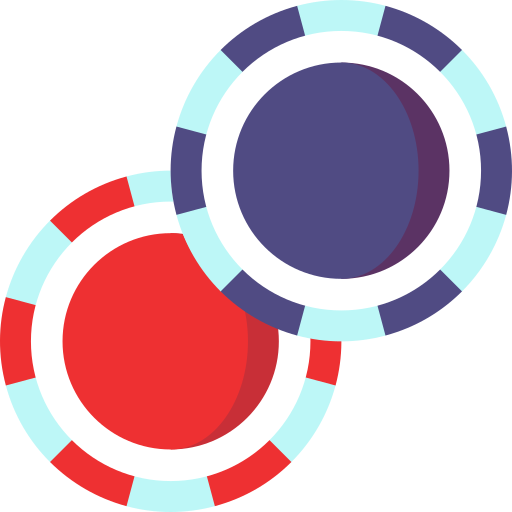
Betting actions
There are several moves to make when it comes to betting in poker. You should have a complete understanding of every action because it will help you win your game. When you raise for example, you have a myriad of reasons why you’re doing it in the first place. In others, asking why is key so you don’t end up just handing out your chips. Make a solid game plan and execute it. That way, you will eventually become skillful in poker.

Texas Hold’em
You should know that poker comes in several variations. After all, we all have our gaming preferences. However, all the topics that will be discussed here can apply to any of these games one way or another. Texas Hold’em is an example of a wildly famous and challenging poker game. It’s something that may take some time to master given its own set of required skills. But when you finally do, it can add a feather to your poker cap, and so will the other variants you are about to encounter along the way.
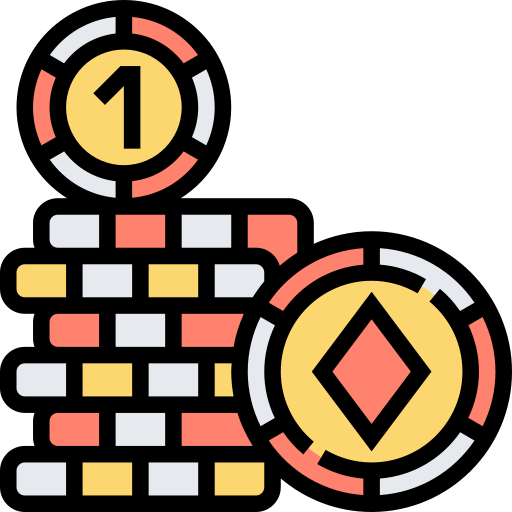
Betting caps
So there are various rules to observe in poker such as limits on the betting amount. These will affect your wager and how much you can raise during a round. Every cap, a fixed limit, for instance, has its own strategic moves and mistakes to avoid. This type of variation is considered the safest in the lot, which beginners can take comfort in, compared to the pot limit and no limit, where bets can quickly skyrocket before you can even think clearly. At the end of the day, it will boil down to a player’s preference, whether he likes to be more in control, or craves that adrenaline rush one can get from higher stakes.

Cash vs tournaments
You can play against your opponents by choosing one of two formats. You can play in a cash game or in a tournament. We reckon that beginners dabble in cash games at the start of their budding poker endeavor before involving themselves in tournaments. The reason for this has something to do with variance, or the luck factor, which we will delve into later in this guide. As such, it would then be difficult to tell if your performance is due to luck or skill, unlike in a cash game where it can be much easier to assess.
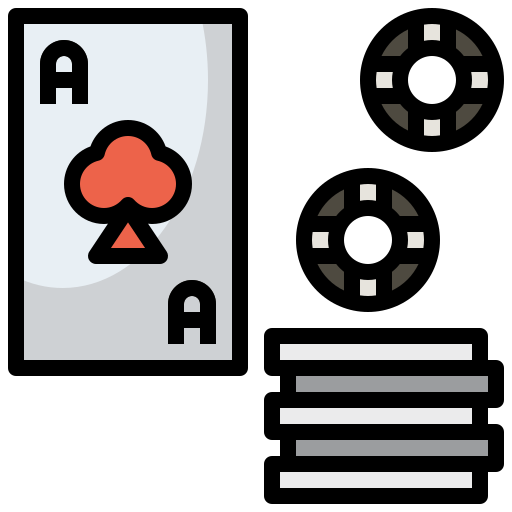
Poker odds
In any case, poker goes beyond luck. It is also a mathematical game and learning about the odds is yet another important consideration for the serious player. It is an essential math, which we recommend for beginners to be already aware of. Crunching numbers is something you can practice incorporating to your games as you progress. Such a scenario involves calling a bet based on your calculated odds, among several make or break decisions at the table.
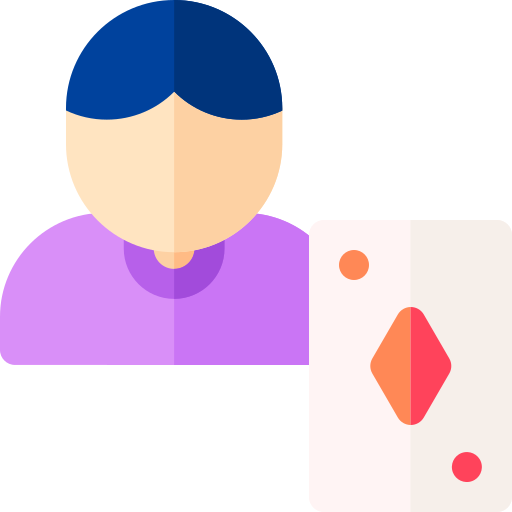
Psychology in poker
Poker is not just about putting your focus on winning, you also become very curious and observant of your opponents’ behavior and your own. It’s a mental game more than anything, and understanding the psychology behind every move is crucial just like learning its mathematical formula. Looking into yourself, you will realize that your thoughts and emotions highly affect the way you play the game. As such, it adds depth, not just to your strategy, but also to your pocket, where it matters most at the end of the day.
Useful advice for newbies
Poker may seem a simple card game at first glance, but you can’t be the next great player by learning it overnight. You need to gain experience by playing it more frequently so you expose yourself to different situations. We will share with you tips and advice to help take your poker play to greater heights and refrain from falling into the pit by committing mistakes that can frustrate even the best of the bunch.
- A weak hand may exactly be just that – a weak hand
Sometimes, you will tend to keep pushing your luck even when you have a bad hand thinking it will come around. It’s hard to accept that your hand, while having a chance of turning around no matter how minute the odds are, is not a great one and will likely remain that way. However, it’s better to mitigate your losses by knowing when to walk away. As one writer puts it, “If you played significantly more hours during those losses than you did during your wins, you have a major discipline problem”.
- Be highly observant
You might think that when you play online poker, you just have to focus on your hand. On the contrary, you should also be watchful of your opponent’s moves and playing styles such as the number of hands they have, their wager amounts, and the time it takes for them to place their bets. You should note though that they are also observing your moves so they’ll be throwing different strategies to mess your mind as well.
- Don’t dive right away
We mentioned earlier that practice is important especially for beginners, and you can do this by playing in free poker games. These serve as a good training ground and see if you can play it using actual chips. You can gradually increase your challenges with higher bets and take advantage of opportunities where you’ll find yourself being the best player in the round by playing against rookies like you.
- Play it cool
It’s not just about keeping the poker face, you also have to be cognizant of the actions you’ve made, so as not to give yourself away. When after a while you finally get a strong hand, you will tend to put in a higher bet. This would make sense if it was on another platform, but in the world of poker, of course, this signals to other players what you’ve got. You have to keep it subtle and slow, and one way is waiting for others to flop before raising your bet.
- Bluffing comes with risks
There’s often an adrenaline rush when you try to push your luck by bluffing, which happens when you have a poor hand. The element of deception can be quite thrilling. While it is a time-tested strategy, it can backfire, especially when your opponents ignore it and show an actually stronger hand.
Intermediate level
Well, here you are, and all geared up for some next-level poker. You must have done your homework, putting into practice the concepts we have discussed in the entry level section, playing in numerous free poker games, and having won on several occasions perhaps. It’s time to hit the money trail and play poker using real money. After all, the stakes are everything in poker. Even if you’re betting pennies and dimes, it is money that makes poker a lot more exhilarating. It’s now your turn to experience putting pressure on your opponents and eventually walk away with the money in your real hand.
Playing with poker chips
When playing real money in poker, all poker rooms and casinos use colorful chips instead of actual cash. They help lessen the incidences of counterfeiting and theft in a physical setting. And besides, it facilitates wagering high amounts, with each color corresponding to a particular value. For example, when you bet 5,000 dollars, you just place one chip, in silver color usually, in lieu of piling your Benjamins on the table.

Winner’s profile
As they say, information is only good if you will put it to use. A great poker player never rests on his laurels. He always has to keep himself in check, by monitoring his performance and noting his mistakes. Discipline is a key element in one’s poker success, along with focus and planning. This is where the following aspects are taken into account:
- Ability to read a hand
- Selecting the right bet size
- Awareness of your table image
- Alertness to poker tells
- Knowing your position
Raking in poker profits
Although there are a number of factors at play to help you win the game, it is important that you are bringing with you a solid poker foundation. Having learned the basic concepts, the following will add more to your poker skills and wallet as well.
Flopping fundamentals
During a pre-flop, you are starting to form a good hand and getting the vibe of your opponents by observing their actions, even tics, which you can use to your benefit. You aim for your opponents to commit errors through flop texture, putting them on a hand, spotting the newbies, to name a few. These will carry on up to post-flop. where you continue to study other players and think of even more ways to add to your strategies.
Using variance
We have referred to variance as a luck element in general, hence we can also say that it comprises the highs and lows in poker. Going further, it shows how your winning expectations long term differ from your short term results. As such, it is a measurable value and says a lot about your performance in poker, affecting your bankroll. It is influenced by several factors like playing style, betting type, and game type. These will help you understand your variance. Meanwhile, every poker setting has an expected value or EV. It is a math concept that provides the amount of your expected wins and losses long term with a given situation. It could either be positive +EV, which is profitable, or negative -EV / unprofitable.
Not going on tilt
The act of tilting is when a player displays irrational behavior after a setback. Simply put, this is when you lose your cool, going the opposite direction of what you should keep while playing poker in the first place. It goes without saying that this action may lead more to negatively impacting your emotions, mindset, and finances, and must be avoided at all times. You can avoid this pitfall by assessing your current state – do your consecutive weak hands frustrate you with anger? Or perhaps you have been making quick yet ill-conceived decisions based on the bad situation you’re in. We also suggest that a player who is getting all fired up to take a time out from a game, embracing variance, and not allowing yourself to be defined by your last game.
Folding low pocket pairs
You’d be surprised to know that many poker players mishandle their pocket pairs when they don’t fold at an early position. Remember, this could work only if there are no raises, which could lead to a win even. However, pursuing it can be a futile exercise when you are faced with at least one raise. This would pertain to pairs 22 up to 66, which more than 80% of the time, do not improve and often, you get stuck with 3 over cards. This would make turning a profit almost impossible.
Playing against tight players
There are several ways to deal with your opponent’s tight playing style. It can combine with being a passive or aggressive type. You can bluff the tight-passive opponent because they would fear losing and only fight it out if they have a good hand. That’s why you should be highly observant so that you can gauge your opponents who could actually be predictable and exploit their weakness to your advantage.
Semi-bluffing
We know that bluffing can be an effective playing strategy, albeit a risky one. It adds to the allure of the poker game. But how do you balance your risks such that it allows you to bluff but your chances of improving your hand are there? We call it semi bluffing. This is betting in a not-so good hand because you think it will improve in the coming rounds, at least that’s how you see it. An example would be drawing a card that could potentially form a flush or a straight, given that your flop has either the same suit or has consecutive symbols already. Similar with traditional bluffing, it retains the element of unpredictability, but with lesser risk.
Pro level
Look at you, willing to spend the time and even more money in this exciting game. What did we tell you from the start? Poker is indeed a lot of fun, and can be a good source of income,too. In fact, there are a number of individuals who do poker for a living. In this stage, you we will go over advanced strategies to help you face more experienced and skillful opponents and beat them to it. Yes, there is a time that the odds will be in your favor and being armed with the knowledge, you will know how to take advantage of such a situation.
Pro strategies
Calculating odds
At this point, you have learned that poker is not just waiting for luck to come to you and playing it cool. You should know how to calculate your odds, and you can do this without it being too complicated. An example of estimating your implied odds is when you have a hand that’s short of a card from being a flush. You can arrive at your probability of getting another card of the same suit by the number of remaining cards of your target suit against the number of other cards that have to be dealt. In this case, it will be about 4:1 odds, which is worth pursuing, especially when you have a big pot. Reverse implied odds are also calculated where you already have a complete hand while your opponent is on a draw.
Blocking bet
This is a tiny-sized bet a player makes that aims to prevent your opponents from betting a high amount. It is employed when you are out of position and you”ll confuse your opponent as to the type of hand you have, which will prompt them to call instead of raise,
Small ball poker
When you have a wider range of starting hands, you play them aggressively using small wagers and raises. The small ball poker helps you build your bankroll and manage your money so you don’t risk too much if some of your plays don’t pan out.
Squeeze play
This playing position compliments those with a tight table image. You want others to follow your lead with your raise by raising their bets early in the game thinking you have a spectacular hand. Use this sparingly because your opponents will catch on eventually, and begin to call your bluff.
Summary
We hope that we have armed you with valuable information which will help recognize and understand your own goals at the table. We believe this will form your strong poker foundation in order to be the best player you can be. While having a lucky streak may be ideal, it could very well be just a short time phenomenon. Having studied the basics all the way to expert strategies is what will make you a real winner in this game long term.

